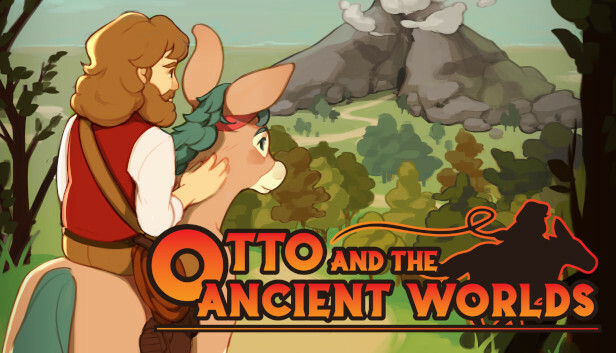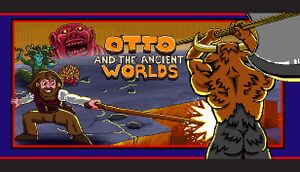Otto And The Ancient Worlds Mac OS
Etimologia del termine. La parola italiana libro deriva dal latino liber.Il vocabolo originariamente significava anche 'corteccia', ma visto che era un materiale usato per scrivere testi (in libro scribuntur litterae, Plauto), in seguito per estensione la parola ha assunto il significato di 'opera letteraria'. In addition, The Ancient World contains material devoted to the art work of the ancient world, including mosaics, frescos, and sculptures, that utilize the interactive features available in ebooks. Each image contains text boxes imbedded into the image itself that, when tapped, explain relevant vocabulary words and important details about the. In Otto Matic has 10 levels on strange alien planets. Battle 25 different alien creatures. Attack with 7 different types of space-age weapons Fight off giant radioactive killer vegetables.Ski.
iPad Pro
Download Otto Matic for macOS 10 Pew pew boom mac os. .6.6 or later and enjoy it on your Mac. . HAS AN OPTION TO PLAY IN STEREO 3D WITH 3D GLASSES!!! The year is 1957 and a fleet. Otto and the Ancient Worlds. Action, Adventure, Indie. Otto and the Ancient Worlds is an 8-bit 2D adventure platformer about an archaeologist who discovers an ancient library filled with magical books. Each book contains a living story of a mythology or folklore, and a mysterious evil figure releases them into Otto’s world!
Supercharged by the Apple M1 chip.
iPhone 12
Purple. Now in season.
From $29.12/mo. for 24 mo. or $699 before trade‑in1
Buy directly from Apple with special carrier offers
iMac

Say hello.
Apple Watch Series 6
The future of health is on your wrist.
AirTag
Lose your knack for losing things.
Fill Mom’s day with color.
Get 2-hour delivery on select Mother’s Day gifts for $9.2 Or pick up at the Apple Store.
Apple Arcade
Wonderbox: The Adventure Maker. Play now.
Apple TV 4k
A higher definition of TV.
Apple TV Plus
The Mosquito Coast
Our editors will review what you’ve submitted and determine whether to revise the article.
Join Britannica's Publishing Partner Program and our community of experts to gain a global audience for your work!Otto I, byname Otto the Great, German Otto der Grosse, (born Nov. 23, 912—died May 7, 973, Memleben, Thuringia), duke of Saxony (as Otto II, 936–961), German king (from 936), and Holy Roman emperor (962–973) who consolidated the German Reich by his suppression of rebellious vassals and his decisive victory over the Hungarians. His use of the church as a stabilizing influence created a secure empire and stimulated a cultural renaissance.
Early years
Otto was the son of the future king Henry I, of the Liudolfing, or Saxon, dynasty, and his second wife, Matilda. Little is known of his early years, but he probably shared in some of his father’s campaigns. He married Edith, daughter of the English king Edward the Elder, in 930; she obtained as her dowry the flourishing town of Magdeburg. Nominated by Henry as his successor, Otto was elected king by the German dukes at Aachen on Aug. The cellar (itch) mac os. 7, 936, a month after Henry’s death, and crowned by the archbishops of Mainz and Cologne.
While Henry I had controlled his vassal dukes only with difficulty, the new king firmly asserted his suzerainty over them. This led immediately to war, especially with Eberhard of Franconia and his namesake, Eberhard of Bavaria, who were joined by discontented Saxon nobles under the leadership of Otto’s half-brother Thankmar. Thankmar was defeated and killed, the Franconian Eberhard submitted to the King, and Eberhard of Bavaria was deposed and outlawed. In 939, however, Otto’s younger brother Henry revolted; he was joined by Eberhard of Franconia and by Giselbert of Lotharingia and supported by the French king Louis IV. Otto was again victorious: Eberhard fell in battle, Giselbert was drowned in flight, and Henry submitted to his brother. Nevertheless, in 941 Henry joined a conspiracy to murder the King. This was discovered in time, and, whereas the other conspirators were punished, Henry was again forgiven. Thenceforward he remained faithful to his brother and, in 947, was given the dukedom of Bavaria. The other German dukedoms were likewise bestowed on relatives of Otto.
Foreign conquests
Despite these internal difficulties, Otto found time to strengthen and to extend the frontiers of the kingdom. In the east the margraves Gero and Hermann Billung were successful against the Slavs, and their gains were consolidated by the founding of the Monastery of St. Maurice in Magdeburg, in 937, and of two bishoprics, in 948. In the north, three bishoprics (followed in 968 by a fourth) were founded to extend the Christian mission in Denmark. Otto’s first campaign in Bohemia was, however, a failure, and it was not until 950 that the Bohemian prince Boleslav I was forced to submit and to pay tribute.
Having thus strengthened his own position, Otto could not only resist France’s claims to Lorraine (Lotharingia) but also act as mediator in France’s internal troubles. Similarly, he extended his influence into Burgundy. Moreover, when the Burgundian princess Adelaide, the widowed queen of Italy whom the margrave Berengar of Ivrea had taken prisoner, appealed to him for help, Otto marched into Italy in 951, assumed the title of king of the Lombards, and married Adelaide himself, his first wife having died in 946. In 952 Berengar did homage to him as his vassal for the kingdom of Italy.
Otto had to break off his first Italian campaign because of a revolt in Germany, where Liudolf, his son by Edith, had risen against him with the aid of several magnates. Otto found himself compelled to withdraw to Saxony; but the position of the rebels began to deteriorate when the Magyars invaded Germany in 954, for the rebels could now be accused of complicity with the enemies of the Reich. After prolonged fighting, Liudolf had to submit in 955. This made it possible for Otto to defeat the Magyars decisively in the Battle of the Lechfeld, near Augsburg, in August 955; they never invaded Germany again. In the same year Otto and the margrave Gero also won a victory over the Slavs. A further series of campaigns led, by 960, to the subjection of the Slavs between the middle Elbe and the middle Oder. The archbishopric of Magdeburg was founded in 968 with three suffragan bishoprics. Even Mieszko of Poland paid tribute to the German king.
Coronation as emperor
In May 961 Otto procured the election and coronation of the six-year-old Otto II, his elder son by Adelaide, as German king. Then he went for a second time to Italy on the appeal of Pope John XII, who was hard pressed by Berengar of Ivrea. Arriving in Rome on Feb. 2, 962, Otto was crowned emperor, and 11 days later a treaty, known as the Privilegium Ottonianum, was concluded, to regulate relations between emperor and pope. This confirmed and extended the temporal power of the papacy, but it is a matter of controversy whether the proviso enabling the emperor to ratify papal elections was included in the original version of the treaty or added in December 963, when Otto deposed John XII for treating with Berengar and set up Leo VIII as pope. Berengar was captured and taken to Germany, and in 964 a revolt of the Romans against Leo VIII was suppressed.
When Leo VIII died in 965, the Emperor chose John XIII for pope, but John was expelled by the Romans. Otto, therefore, marched for a third time to Italy, where he stayed from 966 to 972. He subdued Rome and even advanced into the Byzantine south of Italy. Prolonged negotiations with Byzantium resulted in the marriage of Otto II to the Byzantine princess Theophano, in 972. Having returned to Germany, the Emperor held a great assembly of his court at Quedlinburg on March 23, 973. He died in Memleben several weeks later and was buried in Magdeburg at the side of his first wife.

- born
- November 23, 912
- died
- May 7, 973 (aged 60)
(Anniversary in 6 days)
- king, Germany (936-973)
- house / dynasty
Otto And The Ancient Worlds Mac Os Catalina
- spouse St. Adelaide
- brother Lothar